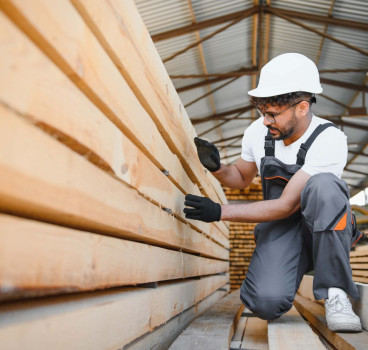Design for Biodiversity
Biodiversity is something that is all too often overlooked in building design and built environment projects, especially on inner city, industrial and commercial projects. Often seen as exclusive for urban development, biodiversity has taken on a new importance and is something that should be considered on every project. Drawing from a pioneering and collaborative strategic ecological framework, BREEAM helps design teams consider how to incorporate biodiversity on every project by looking at the science behind biodiversity, encouraging alignment of relevant processes and promoting consideration of the environmental, social and economic benefits that ecological protection and enhancements can bring.
There have been significant developments over the past decade in best practice for evaluating, protecting and enhancing ecological features. In response to industry feedback BRE Global's BREEAM team has worked with a wide range of stakeholders to understand how to progress development of its ecology assessment content which covers master planning, infrastructure and buildings.
Strategic Ecology Framework for BREEAM Scheme Development
Following extensive feedback from ecology and landscape professionals and others commonly engaged with BREEAM assessments, the BREEAM team concluded that the ratings scheme should take a more strategic approach to encouraging high ecological standards. As a result, the treatment of ecology in UK BREEAM schemes has therefore been extensively reviewed in order to develop a Strategic Ecology Framework (SEF) for improving and evaluating the ecological performance of buildings, assets and developments.
The SEF has been developed to reflect the advances in the field of ecology and landscape management. It forms the basis for future development of relevant ecology-related assessment criteria according to the respective life cycle stages covered by UK BREEAM schemes
Measuring and Specifying for Ecological Performance
BREEAM UK's Ecology related content encourages project teams and facilities managers to reduce and manage impacts on the natural environment and local biodiversity/habitats and identify opportunities for enhancement. It does this by identifying ecological value on and around a site and the risks and opportunities that arise as a result of the design, construction and operation of an asset.
It focuses on processes and actions that protect features of value, mitigate unavoidable impacts, and enhance habitats. Importantly, it also seeks to promote best practice regarding long term biodiversity management practices and strategies for assessed sites and ecologically associated surrounding areas to maximise the outcomes.
Assessment content relate to the use of land of low ecological value, mitigation and enhancement of ecological value, long term ecological and biodiversity management and seek to maximise the wider benefits to occupants and the broader society through provision of additional amenity and economic value in a manner which is context specific.
There are four key issues which make up the Ecology content:
- Identifying and understanding the risks and opportunities for project
- Managing negative impacts on habitats and biodiversity
- Enhancement of ecological value
- Long term biodiversity management and maintenance
Part of each issue focuses on looking at how ecology, biodiversity and soft landscaping can support and link other core specification areas such as landscape and habitat management, surface water run-off management, flood risk management, light and noise pollution, health and wellbeing, and recreational space. Promoting consideration and where appropriate specification of elements which support sustainability and resilience on the site.
Process of implementation
With the SEF published in the spring of 2016, the process of implementation is underway through the BREEAM scheme development update process.
BRE has brought together a group of ecologists, landscape architects and many others involved in the design, construction, handover and operational aspects of the built environment to advise on the development of a methodology for implementing the SEF which could be used across all BREEAM schemes. These individuals span all of the BREEAM schemes. This includes the following BREEAM new build suite of schemes currently being updated:
- BREEAM UK Non Domestic New Construction
- Home Quality Mark
- Next version of CEEQUAL
- (incorporating BREEAM Infrastructure pilot scheme)
These schemes will be the first to take account of the updated ecology content informed by the Strategic Ecology Framework.
Specifying and Creating a Sustainable Built Environment
It is vital that we aspire to a built environment that is optimal in terms of ecology, and not only in terms of technology and costs. Of course not all projects can be ecologically ambitious, but they can take steps to protect and enhance the ecological value of buildings and sites, such as preserving natural areas, maintaining ponds, promoting bee-friendly planting and very many others.
Protecting and improving ecology and how it relates to the built environment can contribute greatly to the environmental quality of our increasingly urbanised world and – as a growing body of evidence shows – improve the health, wellbeing and even productivity of building users. The new and comprehensive ecological framework developed by BREEAM will be key to both promoting and rewarding.
By Yetunde Abdul, BREEAM Scheme Development Manager, BRE Global
Visit: www.breeam.com/sef.
Additional Blogs

What if Building Control went fully digital?
Building control governs structural integrity, fire protection, energy efficiency, accessibility and countless other aspects of design and construction. Historically, this process has been highly...
Read moreWhere most “Smart Buildings” go wrong
Smart buildings are often presented as the ultimate in modern construction - interconnected, efficient, intuitive and driven by real-time data. They promise lower operating costs, reduced energy use,...
Read more

The future of facilities management starts at RIBA Stage 0
Facilities management has traditionally been treated as a discipline that only becomes relevant once a building is handed over. At that point, FM professionals inherit decisions made months or years...
Read more